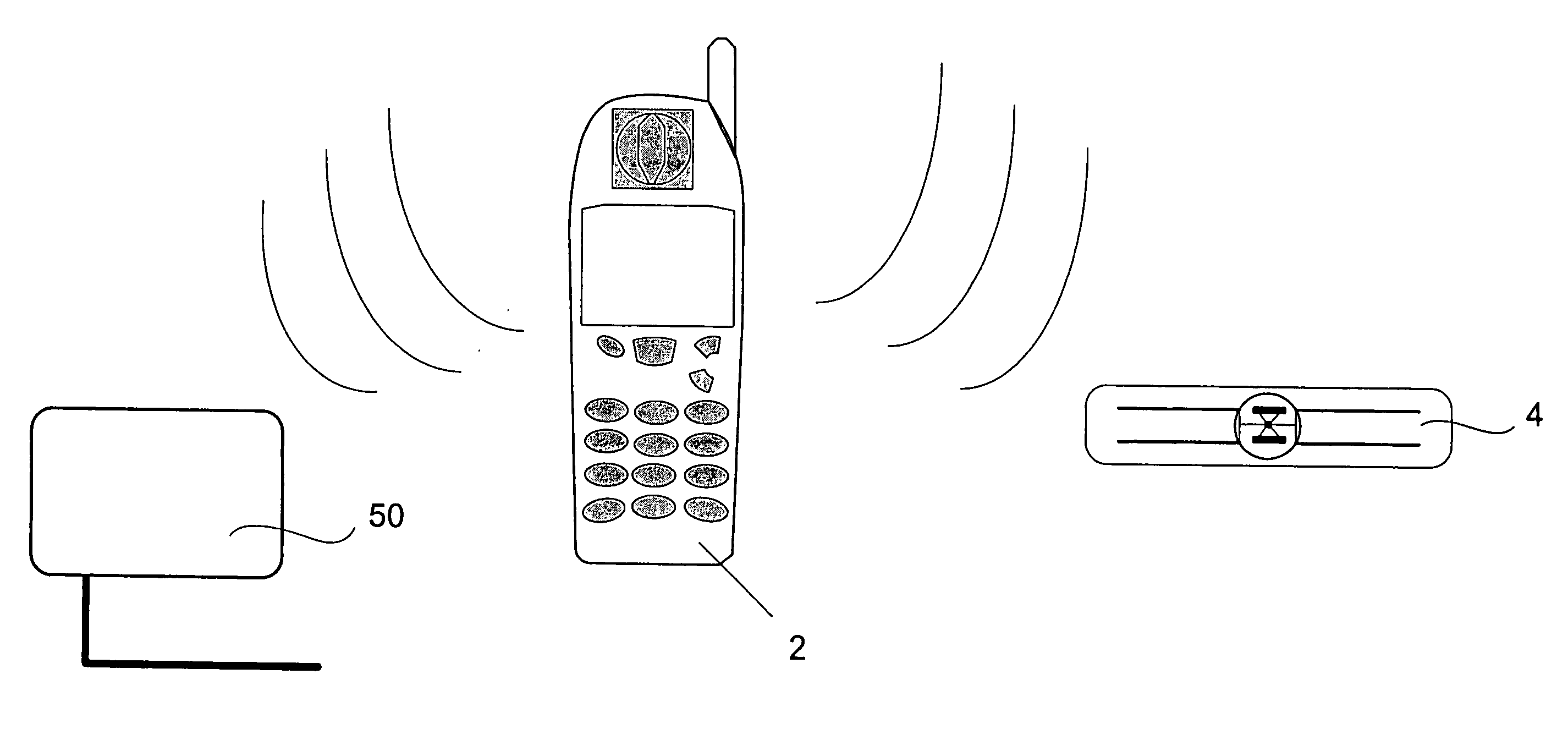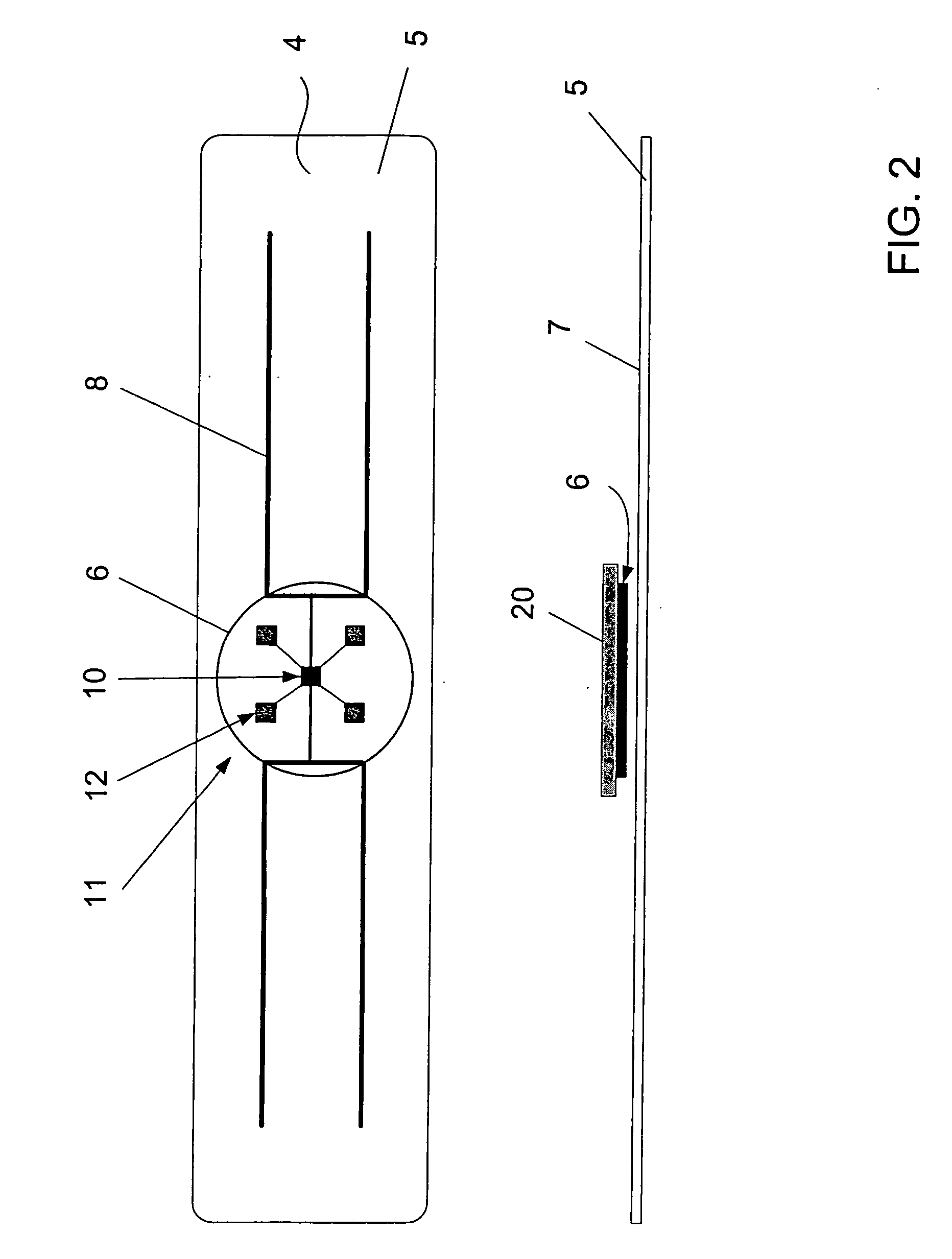Diagnostic radio frequency identification sensors and applications thereof
a radio frequency identification and sensor technology, applied in the field of diagnostics, can solve the problems of inability of rfid readers to communicate through multiple protocols, inability of conventional rfid readers to automatically update or change protocols, and current rfid readers to communicate with rfid tags having a communication protocol, etc., to achieve low cost, low cost, low cost
- Summary
- Abstract
- Description
- Claims
- Application Information
AI Technical Summary
Benefits of technology
Problems solved by technology
Method used
Image
Examples
Embodiment Construction
[0041] The technology described herein allows sensor technologies to be coupled to radio frequency identification (RFID) tags that provide both the power and the wireless interface for the sensor at very low cost. Another aspect of this invention is that common wireless devices such as cell phones can be modified to include the necessary logic and components to become RFID readers. The reader device can furthermore include a multi-protocol RFID reader capability, making it a universal reader for any RFID EPC tag or RFID-sensor tag, regardless of the manufacturer. This technology combination allows on the spot sophisticated processing of complex sensor data at a relatively low cost. The technology also allows RFID tags or sensor tags to be accessed by the Internet using the wireless reader device as a sensor communication tool. Identification retrieval and on the spot software download into the reader therefore becomes possible. Using this dual technology approach, almost any type of...
PUM
 Login to View More
Login to View More Abstract
Description
Claims
Application Information
 Login to View More
Login to View More - R&D
- Intellectual Property
- Life Sciences
- Materials
- Tech Scout
- Unparalleled Data Quality
- Higher Quality Content
- 60% Fewer Hallucinations
Browse by: Latest US Patents, China's latest patents, Technical Efficacy Thesaurus, Application Domain, Technology Topic, Popular Technical Reports.
© 2025 PatSnap. All rights reserved.Legal|Privacy policy|Modern Slavery Act Transparency Statement|Sitemap|About US| Contact US: help@patsnap.com



